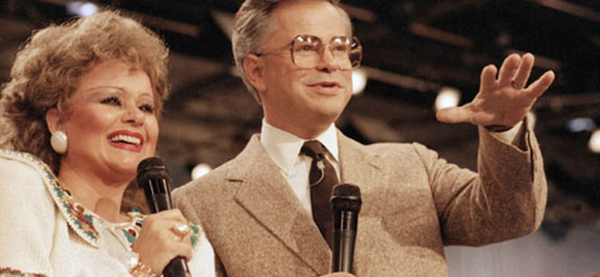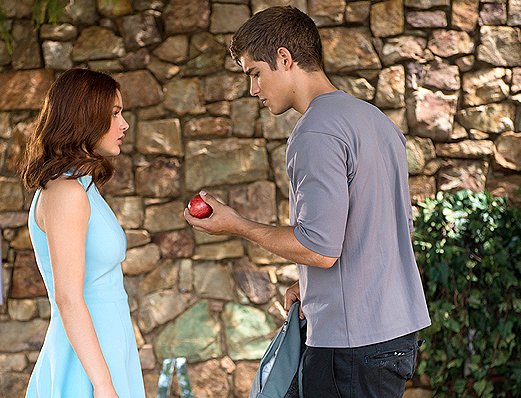
I’ve been thinking a lot about The Giver after seeing it on Friday night in Columbia, Tennessee, with our pastor and a group from our church. Because of my wife’s work with Walden (the same folks who brought you the Chronicles of Narnia movies, Amazing Grace, Because of Winn Dixie, and Bridge to Terabithia), I’d seen sneak previews prior to the theatrical release and primarily viewed the movie through a pro-life, pro-liberty conservative lens. But watching again – especially with my Christian friends – I saw it in an entirely new way.
First, let me be clear that it’s not a Christian allegory. Don’t spend your time looking for the Christ figure or waiting for a Gospel presentation. Other movies do that quite well. Instead, there is a powerful Christian theme that runs throughout, a theme that resonated deep within my heart.
1. It has a strong theme of life.
No, not “life” in the simple, legalistic sense of opposing abortion or euthanasia (though that’s certainly present), but rather in the scriptural context of what life truly means.
As his death approached, Moses gathered the people of Israel together and delivered words that have echoed through millennia:
This day I call the heavens and the earth as witnesses against you that I have set before you life and death, blessings and curses. Now choose life, so that you and your children may live and that you may love the Lord your God, listen to his voice, and hold fast to him.
When Christ came he also talked of life, drawing the contrast between the life he offered versus the destruction of the enemy:
The thief comes only to steal and kill and destroy; I have come that they may have life, and have it to the full.
“Life . . . to the full.” That’s the key phrase, and that’s “life” at stake in The Giver. We Christians speak often of the problem of pain as we struggle to reconcile life on this earth, with all of its heartbreak, with the life as described in scripture, the life we are to choose now, the life in full.
In the world of The Giver, the leaders chose to deal with the problem of pain by removing pain, even the pain of death (calling it a “release” that an uncomprehending public celebrated). This was not life in full, but instead a shadow of a life (portrayed literally in blacks, whites, and grays) – one that could only be defeated by life in full.
Yes, including the pain.
One of the most powerful scenes in the movie comes when Jonas, the hero of the movie who is one of only two members of the community who can feel the full range of human emotions, happens upon his first experience with war – through the memories of others.
The pain devastates him, as it has so many others. Yet it is part of the life in full, the life that has been stolen from him – and everyone – allegedly for his own good. Yet that pain doesn’t destroy him. Why?
2. It demonstrates the necessity of faith.
The only way we can live “life . . . to the full,” the life that Christ provides is through faith.
After all, if life were nothing but the scenes of joy and love that Jonas first experiences when glimpsing the truth about life, faith would seem superfluous. But scenes of constant joy are no more real than the black and white world that Jonas ultimately escapes.
Simply put, the life in full requires faith.
And so it must be for us. The life in full that Christ promises can take us terrifying places. I think of Kent Brantley, the American doctor who battled Ebola after treating Africa’s sick and dying. Even if we don’t venture far from home, we still can’t escape pain and loss. Only through faith can we understand this key reality:
And we know that in all things God works for the good of those who love him, who have been called according to his purpose.
All things. Even the terrifying, the devastating, the shattering things. All things.
3. It points towards Christ in a powerful way.
(Warning: spoiler alert.) During the climax of the movie, the wave of emotions and memories that sweeps away the grays of the false life aren’t just the happy memories and uplifting emotions. Mixed amid the scenes of joy are scenes of despair and loss. What washes over the community isn’t just a slightly more uplifting version of the life their leaders had chosen but instead a vision of life in full.
And as they struggle to grasp the reality that washes over them, what is the final scene of the movie, the scene that leaves us hopeful for their future?
It’s a celebration of Christ’s birth.
As the movie ends, a community experiences life in full as a baby – Gabriel – (yes, the same name as the angelic herald of Christ’s birth) is rescued from death through a long and winding journey that leads – in its own subtle way – to the message of the nativity.
When Gabriel is finally safe, and when the community is finally free, he hears music for the first time.
He hears that classic Christian hymn, Silent Night.
Go see The Giver because it’s a good movie, but also see it because it will remind you of the “life in full,” the life that Moses tells us to choose and the life that Christ promises to provide… a life that can only be truly lived through and by faith.
Read more on the Patheos Faith and Family Channel and follow David on Twitter.
YOU MIGHT ALSO LIKE:









